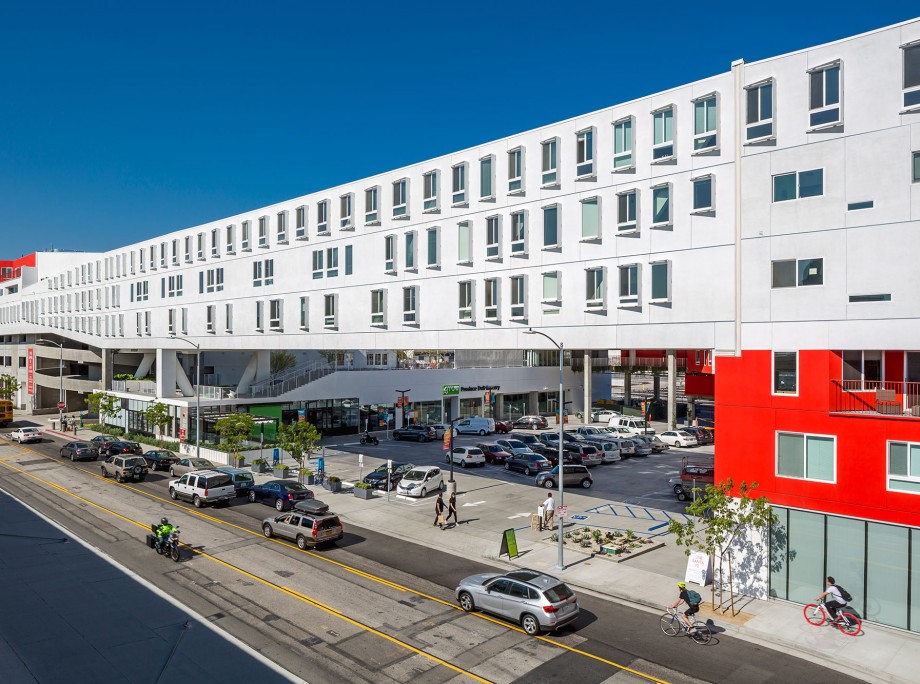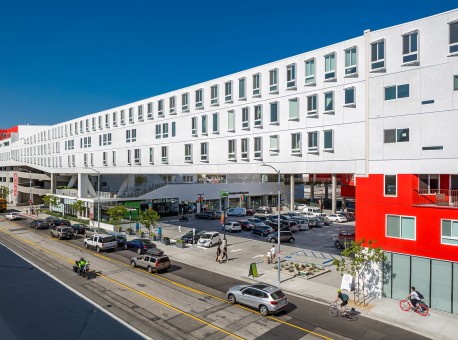One Santa Fe Housing in Los Angeles
The Architectural Review
August 5, 2015
Maltzan’s bold, stacked forms engage with a formerly industrial neighbourhood in downtown LA
Fundamental transformations are taking place within the two main urban centres of California, the state that exemplified a previous model of laissez-faire sub-urbanity. The force of change is a new generation of urban dwellers that bring a different set of values around identity, community and responsibility. The effect of these changes seems to differ between the two cities, as a forum commenter recently pointedly summarised: ‘San Francisco is a utopia gone wrong, while Los Angeles is a dystopia gone right.’ While SF’s development has become dubiously intertwined with the tech boom and its relating social disparities, LA is possibly evolving towards a more enmeshed alternative. These developments deserve attention, as even more than the car-oriented suburb of the ’60s, this current idea of the city might well become the model for other developing regions around the globe. Los Angeles for decades was understood as an entropic field of enclaves. A mat-city where sunshades and windshields allowed for a coexistence of minimal interaction, as depicted so cleverly in Robert Altman’s Shortcuts (1993). The city’s downtown frequents as hell-on-earth in numerous sci-fi movies. For years, the dark and haunted vision of this part of town, as depicted in Blade Runner (1982), was an idée fixe. Come 2014, Spike Jonze’s magical realism brings us a radically new notion of what LA’s future might look like. In Her, the movie in which protagonist Theodore Twombly falls in love with an OS with an exceptionally seductive voice, the future of downtown LA is clean, dense and comfortable. According to Her cinematographer Hoyte Van Hoytema, Jonze wanted an LA set in the not-so-distant future – a ‘world that was tactile and pleasant: the very opposite of a dystopian future’…

